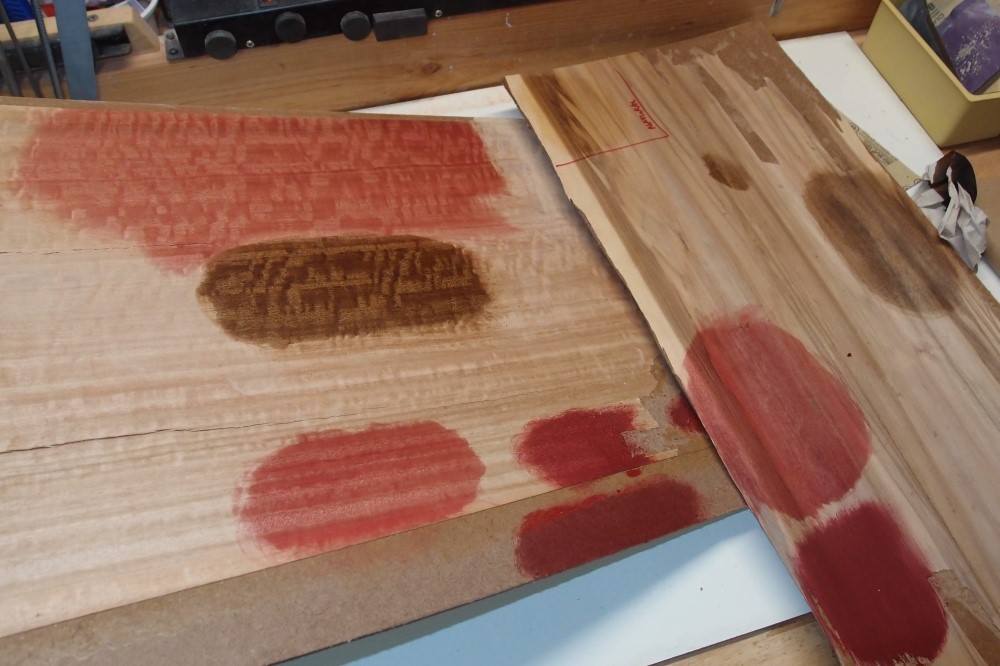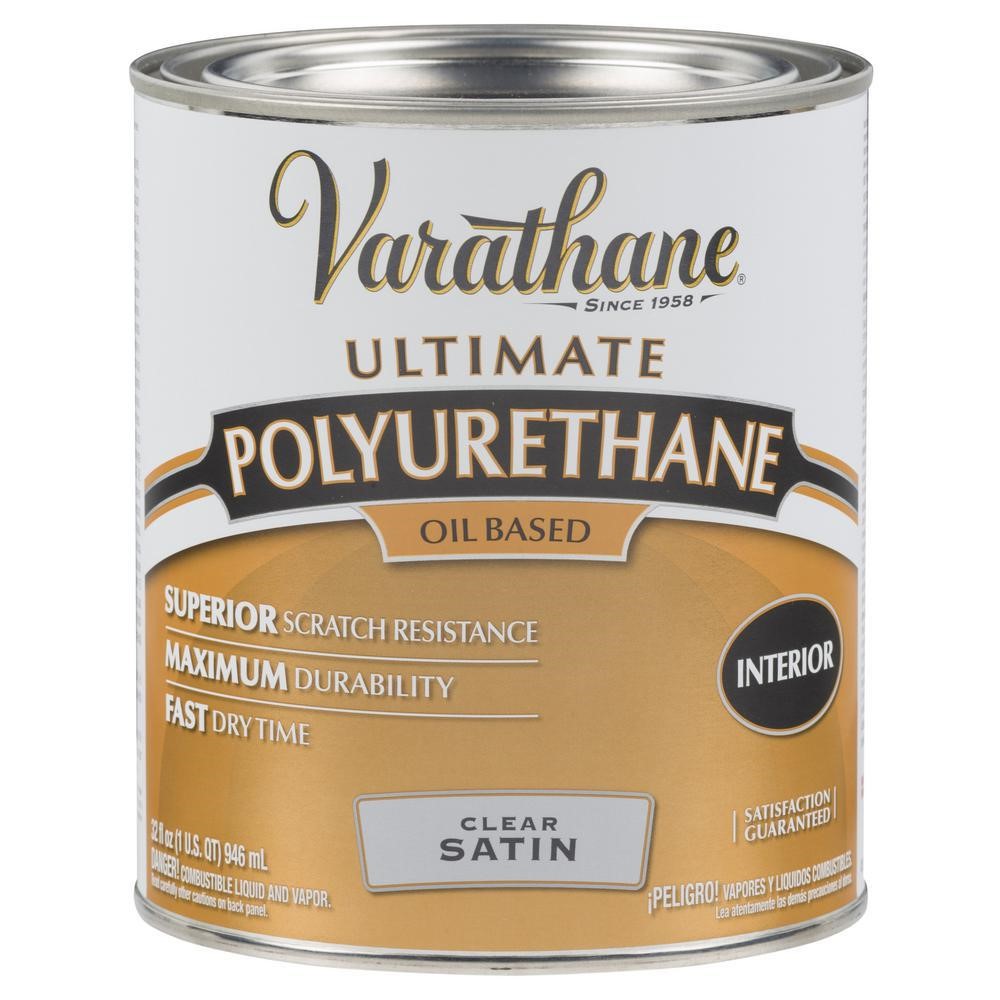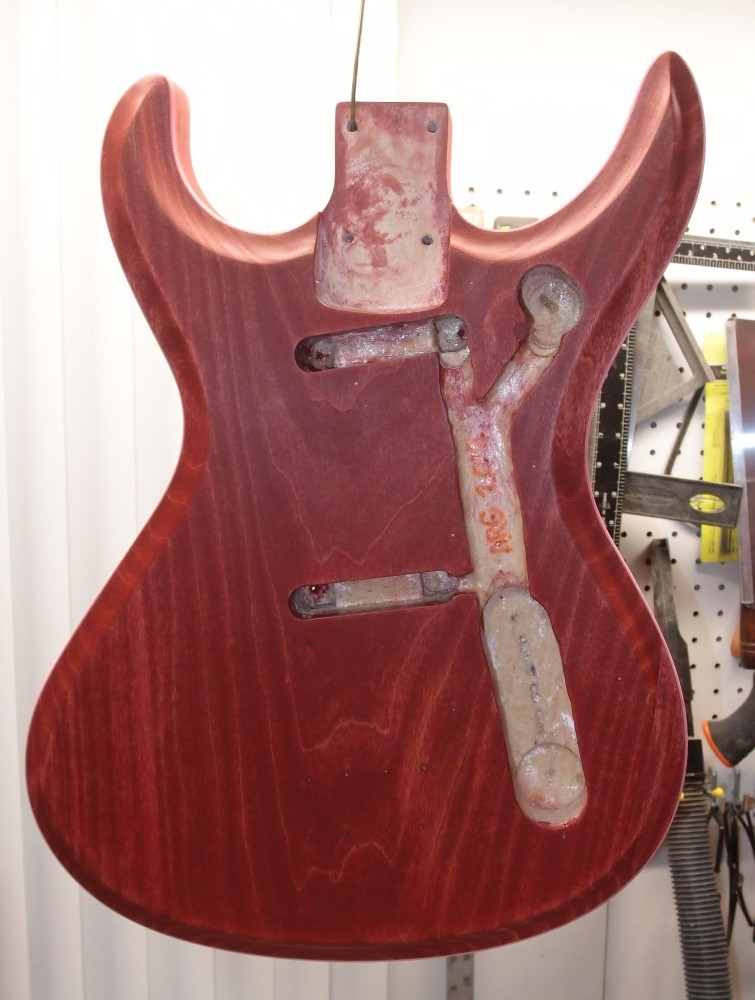Stains & Dyes

A few quick color swatches on some veneers. The deep red is Varathane "Barn Red", the lesser red is the same thing diluted 3:1 with mineral spirits. The brown is Minwax "Provincial 211", my regular brown stain for everything. And of course, Minwax "Natural", which gives its usual warming and brings out the grain.
This continues the story of Varathane products being much stouter than Minwax products, whether it is stain or polyurethane. To get any kind of decent result with the Varathane stain, it must be diluted, otherwise, it will completely obliterate the wood grain. Varathane poly is much thicker, good for sealing and undercoats, not so good for topcoats. Varathane is exclusively Home Depot, Minwax is exclusively Lowes.
I like both colors on the eucalyptus, which also reacts to the angle of the light. The brown looks good on the gum, I don't care for the red. I also tried staining the masonite directly. Dark brown or black work best, masonite has an interesting 'grain' pattern when clear coated. I wonder how well OSB would finish? I have sanded the lumpiest part of the eucalyptus almost flat.

Wood stains are unpredictable. Always test on scrap first.

This is beeswing eucalyptus on masonite, stained to my standard dark brown.
I can’t get excited over stains. I can take two different ones and make them look the same, I can get a whole range of shades from one can. It all depends on the application. Here, I was aiming for walnut, so I drenched the wood with two coats with no pre-treatment. The result is essentially one big blotch. Further applications have no effect, the wood is saturated.


Questions or Inquiries?
Just want to say Hello? Sign the .